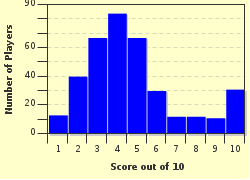Quiz Answer Key and Fun Facts
1. Matt Mason was one of the many popular "action figure" dolls, heavily advertised on TV during the 1960's. A dedicated member of the armed forces, what military rank did Matt Mason hold?
2. Television advertisements in the 1960s made the name Barney Acres a household reference among young viewers. What popular toy was associated with champion Barney Acres?
3. A catchy television jingle played during commercials encouraged kids to make the "Secret Sam" a part of their toy collections. Exactly what was a "Secret Sam"?
4. Rivaling the electric train in popularity, miniature slot car racing sets became the rage in the 1960s. Which toy company manufactured the FIRST miniature slot cars?
5. The Ideal Toy Company manufactured and advertised a number of the popular "fashion dolls" to the delight of both young girls and serious doll collectors. Which popular doll was NOT produced by the Ideal Toy Company?
6. "Johnny" was the first name of a number of toys manufactured and heavily advertised to young television views. Which was NOT the name of a toy that could be purchased during the 1960s?
7. Television commercials during the early 1960 acquainted viewers (mostly boys) with a new toy called "Mighty Matilda". What was Mighty Matilda?
8. For the Mattel Inc. toy company, the Barbie doll series represented one of their most successful products lines. In the early 1960s, Television commercials introduced viewers to Barbie's family and friends by presenting them as new dolls. Which popular doll was NOT a sibling of Barbie?
9. The early 1960s saw the advent of a game that involved two boxing robots. What were the colors of the two pugilist combatants known as the "Rock'em Sock'em Robots"?
10. The Barbie Doll was without question the best selling doll in the 1960s. Partly as a result of a massive Television advertising campaign, what was the SECOND best selling doll during that decade?
Source: Author
MaceoMack
This quiz was reviewed by FunTrivia editor
WesleyCrusher before going online.
Any errors found in FunTrivia content are routinely corrected through our feedback system.

